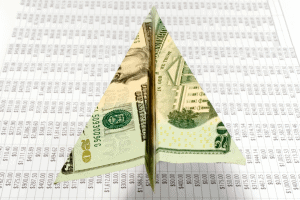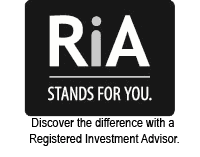Download the PDF copy here
Executive Summary
- Good luck producing a definition for the term recession. The common understanding is that a recession is defined by two consecutive quarters of negative real Gross Domestic Product (GDP) growth. According to the Bureau of Economic Analysis, this does not designate a recession.
- The official arbiter of a recession in the U.S. is the National Bureau of Economic Research (NBER). This is a group of mostly academic economists who place dates on when a recession begins and ends. The committee officially designates recessions by monitoring a variety of economic indicators, including GDP. They also use employment, personal income, industrial production, and retail sales data in the effort to designate a recession. So, the official definition of a recession is a deterioration in economic activity as defined by NBER, after considering a wide range of data points. That definition is clear as mud.
- NBER takes its sweet old time in defining the beginning date and end date of each recession, as the bureau completes this task after a recession has ended.
- No wonder there is so much data presented, and editorials written about the state of the economy and prospects of a recession. Are we heading for a recession? Will we slide by without a recession? We are not sure it matters. The data shows that economic growth has slowed. Corporate sales and earnings growth have slowed in 2022. The equity market has experienced a bear market (down greater than 20%) and in fear of hawkish Federal Reserve activity, the Barclays Aggregate Bond Index and the Merrill Lynch Corporate Bond Index has experienced a correction (down more than 10%).
- Since WWII, the S&P 500 average bear market drawdown has been 31.2%. The average bear market drawdown without a recession has been 28.8%. The average bear market drawdown with a recession is 32.4%. (Data from Charles Schwab). By reviewing averages, the range of outcomes are not large with or without a recession. The maximum drawdown in the S&P 500 this year was 24% in mid-June. Corporate earnings can slump with or without an official recession.
- We track macroeconomic data for clues about making tactical portfolio adjustments. We do not use the information to speculate on departure and re-entry points from and to the market. Market timing is a fool hardy endeavor. There are stories of success with timing, but it is overwhelmingly met with less return over the long term than by just staying invested.
- Inflation is a topic of greater interest in that it directly effects personal and corporate cash flow. It is a source of negative attitude toward the economy and securities markets, even when personal or specific corporation’s reality may suggest otherwise. Although, it can be the root cause of economic and corporate earnings downturns. It, therefore, holds the greatest attention of the Federal Reserve. At this point, the FED is committed to tackling inflation at the expense of possibly creating a recession.
Macro-Economic Perspective
- First quarter real GDP (nominal GDP less inflation) was down 1.6% annualized. The second estimate of second quarter real GDP was down 0.6% annualized. Please note that nominal GDP from 2021 year-end through the 2nd quarter end was up approximately 7.1% on an annualized basis. Although inflation pulled real GDP down, actual total economic output was up significantly. If inflation were not brought back under control, the case for continued nominal growth would be non-existent.
- Real GDP was driven negative in Q1 by negative net exports (China consumption down due to Covid lockdowns).
- Real GDP was driven negative in Q2 by a reduction in inventories. An odd outcome when a lack of supply of goods and services has been an issue. But inventory to sales ratios is back up to pre-pandemic levels, except for car dealerships (still very low).
- Real personal consumption expenditures were up in Q1 and Q2 at 1.24% and 0.7%, respectively.
- The most recent projections for real GDP growth in the U.S. come from International Monetary Fund (IMF) in July and The Conference Board on August 10th for 2022 and 2023. The estimates are 2.5% and 1%, respectively from the IMF and 1.3% and 0.2%, respectively from The Conference Board. Forecasts are declining as the year progresses.
- Real disposable income declined 2.1% in Q1 and shrunk by a scant 0.1% in the 2nd quarter in spite of nominal increases of 5+%. Source: Federal Reserve St. Louis. This is evidence of the damage being done by inflation. High inflation lowers our purchasing power. Depending upon one’s circumstance, to maintain expenditures one may have to dip into savings, or lower one’s savings rate.
- Savings rate: The typical savings rate since 2010 has been approximately 6 to 8%. Savings sky- rocketed from massive government transfer payments in 2020 and 2021. This year we saw the savings rate at 5.6% in Q1 and 5.2% in Q2. This slowdown in the savings rate certainly is not alarming but appears to be a side effect of inflation and predictable with negative real income in Q1 and Q2. The Federal Reserve reported that people in the top 10% of wealth held 32% more cash in June than in Q1 of 2020. People in the bottom half of wealth held 45% more cash than in Q1 of 2020 with similar percentages across the other demographic groups. A Barclays economist estimated that it would take until the end of 2023 to drain off the excess cash. Thus, blunting or preventing a downturn from coming at all.
- Money Supply – change of course: The massive increase of 42% in M2 money supply (cash, checking and savings deposits, money market, mutual funds, and CDs) from February 17, 2020, to the end of 2021 has been well documented. Historically the Federal Reserve Bank raises money supply in a range of 3% to 6% per year. Since last year end, the money supply is on a pace to rise 3.3%, but in the 2nd quarter, money supply growth was only 1.3%. Source: Federal Reserve Bank of St. Louis. Keep in mind that the Federal Reserve only just began quantitative tightening (allowing bonds on its balance sheet to mature without replacing them, this causes money to come out of circulation) on June 1st. It is assumed that the Federal Reserve will shrink the money supply this year as they pursue quantitative tightening and raising interest rates in an effort to constrain the economy and thereby lower inflation.
- The velocity of money (the frequency at which one unit of currency is used to purchase goods and services within a given period) continues at an exceptionally low level. As a result, this has not been additive to our inflation problem. We anticipate that his reading will remain low.
- Household net worth peaked at $111.04T at year end 2019. Since then, it has risen 28% to $141.7T at the end of 2021. At Q1 end, it declined slightly to $141.1T. The 2021 year-end value looks like a near term peak, but household net worth continues to be supportive of economic growth. Source: Federal Reserve (June 2022 reading comes out in September).
- In addition to the overall health of personal savings and net worth in the U.S., there remains pent-up demand for services consumption. Before Covid, the real (inflation adjusted) balance of goods / services spending was 37% to 63%. At the peak of behavior shift due to public restrictions, the goods / services spending shifted to 41% / 59%. The trend continues to reverse with a reading of 39% / 61% at the end of the first quarter. This adjustment in spending behavior could help lower goods inflation but may shift it towards the services side of spending if labor supply remains constrained.
- Employment: Labor supply is still extremely tight. Although, there were 1.65 million jobs gained in Q1 and an additional 1.24 million jobs in Q2.
- Job openings peaked and have since declined from 11.9 million at Q1 end to 10.7 million at Q2 end. Over the same period the number of unemployed has remained steady at 5.9 million.
- Initial filings for unemployment insurance benefits reached record lows in March but since have increased steadily to readings that are still quite low.
- The labor participation rate remains elusively low at 62.2% at Q2 end. Prior to Covid, the participation rate was 63.4%. Participation rates were 59% in 1965. It gradually rose in the 1970’s through late 1990’s to 67% with baby boomers and women entering the workforce. Since 2010’s, participation has dropped to 62%.
- Labor supply remains a significant issue and an impediment to economic growth and solving inflation. There are 20.8 million part time workers (up 1.2 million in the last year) in the U.S. for non-economic reasons. A return to 65% participation rate would add 7.92 million people to the available workforce, or 2.64 million workers per 1% gain in participation.
- Inflation
- How did we get here? High inflation has been the outcome of the Covid shutdown with simultaneous government transfer payments to corporations and individuals. This resulted in a lack of production / supply of goods and services while demand remained high with a large bubble of money supply via the transfer payments. The Federal Reserve reasoned the high inflation would be transitory with the reopening of the economy via a return to work and a shift of demand back into services. The return-to-work numbers have not met expectations. Supply issues were extended by China’s zero Covid policy and further exacerbated by Russia’s war in Ukraine impacting supply of commodities and energy. Inflation is not just an issue in the U.S., it is an international problem.
- Data suggests inflation has peaked. Freight and shipping costs are declining. Corporations have utilized eastern shipping ports to help alleviate congestion on the west coast ports. Core readings of the Consumer Price Index (CPI) and the Personal Consumption Expenditures (PCE) Index appear to have peaked in March at 6.4% and February at 5.3%, respectively. Core CPI now reads 5.9% and Core PCE reads 4.8%. Month over month readings for CPI and Producer Price Index (PPI – aka wholesale inflation) were 0% and -0.5% respectively.
- Expectations: The New York Federal Reserve bank survey shows continued declines in consumer expectations for inflation. For instance, between June and July alone, the expectations for one year, three years, and five years declined from 6.8% to 6.2%, 3.6% to 3.2%, and 2.8% to 2.3%, respectively. Similarly, the bond market determined 5-Year Break-even Inflation rate has ranged from 2.56% to 2.79% since the end of the second quarter. Consumer expectations for inflation have a significant impact on its future course. The FED’s median projections for PCE core inflation are 4.35% for 2022, 2.85% for 2023, and 2.3% for 2024.
- Resolution: Left unabated, inflation is very damaging to an economy. Capitalistic solutions are preferred, but the Federal Reserve has a dual mandate of price stability and maximum sustainable employment. The Federal Reserve is not willing to risk continuation of high inflation. They will continue to utilize higher interest rates and quantitative tightening to slow the economy and thereby reduce inflation. Ultimately, the FED is seeking to get inflation back to their 2% target or as high as 2.5%.
- Hope: Wall Street Journal editorialist, Donald Luskin’s research shows that the lag between money supply (M2) growth and inflation is 13 months. Year over year M2 growth began to accelerate in April 2020 and core inflation began to accelerate in May of 2021. M2 growth peaked in February 2021 and core inflation peaked in March 2022. Mr. Luskin goes further to suggest that with M2 growth in May of this year, he expects core inflation of 2.3% in June of 2023. Article was in 7/26/22 issue of the WSJ.
- Macro-economic Summary or Conclusions
- Rate of goods consumption has slowed.
- Consumer demand for services is very high.
- Inflation has caused reductions in real disposable income and personal savings rate, but consumers are still in very good condition.
- Labor supply is tight.
- The U.S. economy is beyond its near-term peak. So is inflation.
- Federal Reserve bank’s efforts to reduce inflation via reducing demand with restrictive monetary policy are complicated by the shortage of labor, the strength of the consumer, corporations, and the economy.
- A better solution to high inflation would be resolutions to supply issues where some progress has been made. Geopolitical concerns relating to oil, natural gas, and natural resources complicate the market-based solutions.
- The heavy hammer of the Federal Reserve bank is and will continue to be deployed. They will be guided by readings for PCE core inflation.
- As a result, the securities market will continue to be volatile in the short term until confidence is gained in a resolution to high inflation.
Key Segments of the Economy
Consumer spending (70% of GDP): In Q1 and Q2, real personal consumption expenditures (annualized) rose 4.5% and 1.8%, respectively over year ago level and 1.24% and 0.7%, respectively over the previous quarter. Strength is still present, but the trend is down. Similarly, the Institute of Supply Management (ISM) reading for service in December was 62.3, in March was 58.3, and in June was 56.3. A reading of 50 is the dividing line between decline and growth.
Manufacturing (11% of GDP): The ISM reading for manufacturing also remains strong, but also is trending down with a reading in December of 58.8, 57.1 in March, and 53.0 in June. The Federal Reserve reported year over year gains in industrial production each month this year. Ranging from 2.8% in January, to a high of 6.7% in February, and 4% in June.
Construction (4.1% of GDP): The impact of higher interest rates is only just beginning to be noted in total construction. Construction was up 8.3% year over year in June, but down 0.3% from March.
Home sales: The impact of high prices and higher interest rates are being felt in existing and new single family home sales. The National Association of Realtors (NAR) reported that combined existing and new home sales declined 16.1% from 6,929,000 annualized in December to 5,700,000 annualized in June.
Supply of homes for sale has risen from 1.7 months in December to 3.3 months in July. This is still low, but a good trend for affordability. Six months’ supply is considered a balanced marketplace for buyers and sellers. Estimates of the shortage of housing units in the U.S., occurring after the housing/financial crisis is 3,000,000.
Housing starts and permits have declined 10.5% and 9.6% respectively since 2021 year-end (U.S. Census Bureau). They are now in the range of new family formation, around 1.5 million per year. In a sign of the problem with affordability, multi-family housing unit permits are up, while single family units are down. (Data from Fed Reserve of St. Louis).
Housing affordability is a significant issue. More housing supply is needed, but higher interest rates will conflagrate the problem before it can get better.
Securities Market Perspective
Through the second quarter this year, a 100% stock portfolio with 20% invested in international was down approximately 20.19% with dividends reinvested. Intermediate term bonds (Barclay’s Aggregate Bond Index) were down 10.81%, and short-term bonds were down 3.11% (Barclays U.S. Gov’t Credit 1 to 3 Year Bond Index).
Presently, the federal funds rate is approximately 2.4%. The Federal Reserve is projecting a need to raise the Federal Funds rate to 3.4% by the end of this year and to 3.8% in 2023 in order to continue to combat high inflation.
Prior to 2022, DBFM had moved a heavy portion of bonds into short term from intermediate term in anticipation of rising interest rates. We have continued this process as rates increased this year. Longer term bond prices are more negatively impacted by interest rate increases. This risk of pulling out of intermediate term high quality bonds (Barclays Intermediate Term Bond Index) is that these bonds would likely perform better should recession conditions become obvious as investors would move money into them to safeguard their money. This action would drive the bond prices up / yields down. In order to account for the possibility of recession, we are allocating a significant portion of short-term bonds to high quality.
Stocks have also reacted negatively to the prospect of continued high inflation and higher interest rates. Especially so for growth stocks. By June 30th, the weighted average return for domestic growth stocks was -28.72%, and the weighted average return for domestic value stocks was -12.72%. Value stocks were leading all stocks by 8% through the second quarter.
At end of the second quarter, as measured by price to book value, growth stocks were 86% above their long-term average of 4.83 at 8.97, a significant improvement from a peak level of 180% (2021 year-end) above the long-term average, but still quite high. Value stocks were 6.4% above their long-term average of 2.03 at 2.16, an improvement from a peak level of 23% (2021 year-end). On a relative basis, there could be more pain ahead for growth stocks as compared to value stocks. In 2021, low interest rates were providing cover for higher valuations particularly for growth stocks. With assurances of interest rate increases, you can expect greater volatility for growth stocks.
After increasing use of quality growth mutual funds in 2020 to take advantage of the stay-at-home tech success, we eliminated mid-cap and small cap quality growth in 2021 and have significantly reduced large cap quality growth funds earlier this year.
While 92% of companies have reported 2nd quarter results, 75% of the S&P 500 had profit results above analyst’s estimates. Q2 earnings growth for S&P 500 was 8%. Projections for Q3 and Q4 are for 10+% earnings growth.
Wrap-Up
- Recession or not – Currently, we do not see a case for a deep or extended down period.
- Consumer cash savings are very high.
- Household delinquencies are below pre-pandemic lows.
- Bank charge-offs normally average about 2% or more are still below 1.5% for five straight quarters (Board of Governors of the Federal Reserve System).
- High yield corporate bond default rates are at historically low levels.
- High yield bond spreads to Treasuries have risen in the last three months but remain approximately at the long-term average.
- Employment is high and labor supply is tight. Some corporations are reducing hiring plans but are loath to let anybody go.
- “Labor demand is so strong that workers who lose their jobs are likely to find new ones faster than typical downturns, which will likely break the typical recession cycle where job losses trigger consumer spending cutbacks and less revenue for businesses, which forces additional layoffs.” Bill Adams, Chief Economist at Comerica Bank.
- Confidence survey disconnect
- The University of Michigan Consumer Sentiment survey has declined from 101 in February 2020 to 50 now. The present reading is lower than survey readings in 2008 and 2009 during the financial crisis. The Conference Board’s survey of consumer confidence points to concerns about inflation. Yet, employment and consumer financial position are strong. Spending behavior deny the sentiment and confidence.
- Federal Reserve Bank of Atlanta and Richmond CFO survey of optimism in the economy was 50.7, while optimism regarding their company was 68. Scale: 0 to 100.
- The Business Roundtable’s CEO Economic Outlook Index survey which was completed in early June registered a score for expectations for their company’s performance of 95.6. This compares to the pre-pandemic score in the fourth quarter of 2019 of 76.7.
- Corporations are investing capital in equipment, stock buybacks, and dividends at nearly record levels. The executive suite is signaling they are comfortable spending money instead of hoarding cash.
- It is apparent that high inflation makes for a poor state of mind despite the reality of one’s present financial state and outlook.
- Planning steps for clients
- Reduce or avoid debt where possible given higher and rising interest rates. o Revisit budgets and continue to save and invest.
- Ensure that your cash reserve is adequate.
- In the meantime, we remain long term bullish, seeking necessary or opportunistic tactical adjustments to portfolios, and remaining diversified for long term success.
Please feel free to contact us with any questions, or if you would like to schedule face to face, virtual, or phone meeting.
Thank you,
Dave Dickmeyer, M.B.A.
Wealth Advisor
Principal Owner
Ian D. Boyce, CFP®
Certified Financial Planner™
Principal Owner
Drew Lanphear, CFP®, RICP®
Certified Financial Planner™








